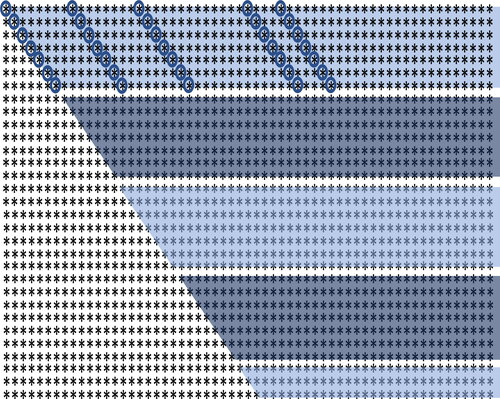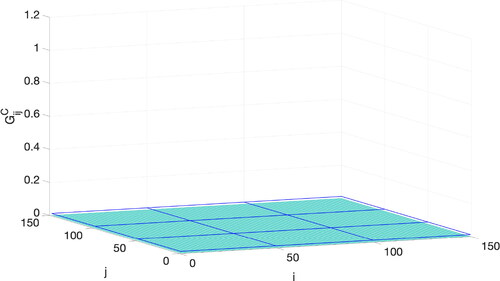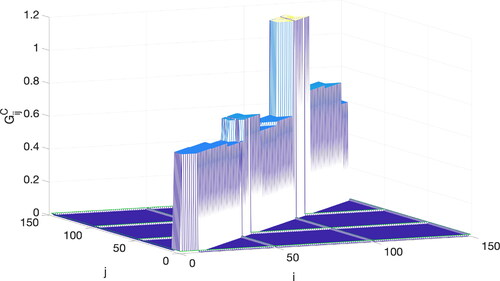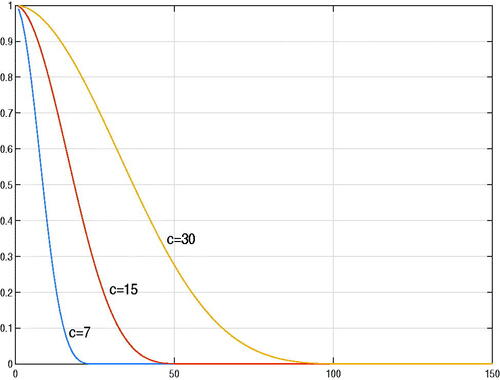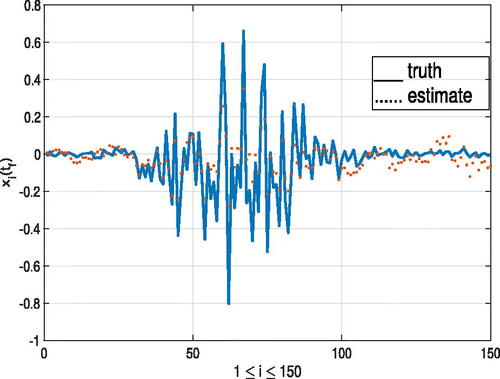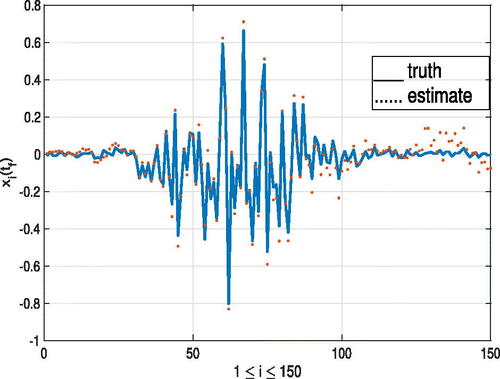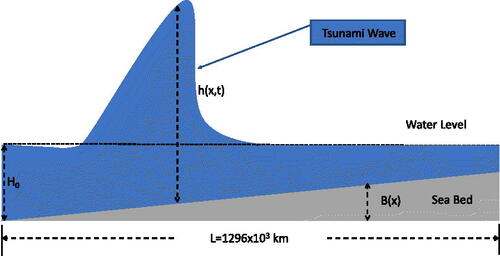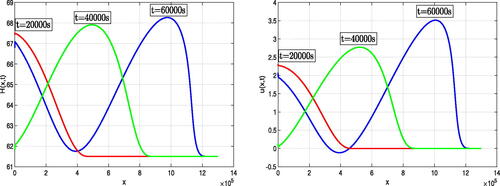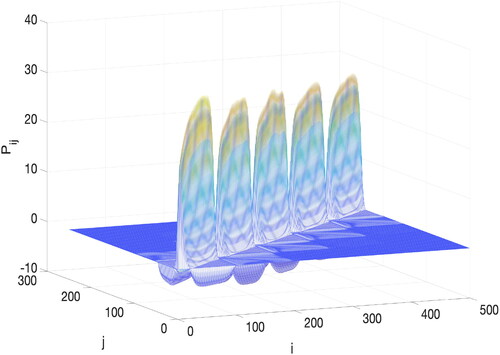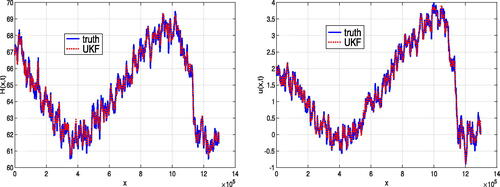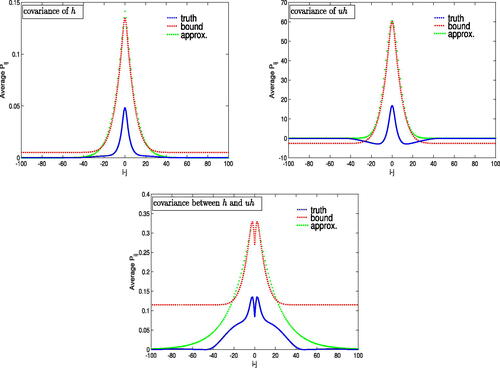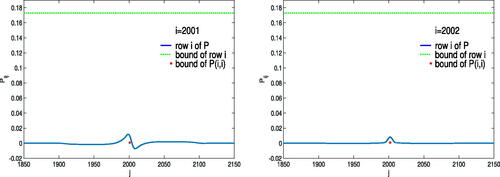Figures & data
Fig. 6. The averaged error covariance along diagonals of blocks. The horizontal axis represents the indices of diagonals, where the middle point is the main diagonal. The vertical axis represents the average value of the elements in the error covariance along diagonals. The blue curve represents the true error covariance of a linear Kalman filter. The red curve is the matrix upper bound of error covariance. The green curve represents the approximated decay function.
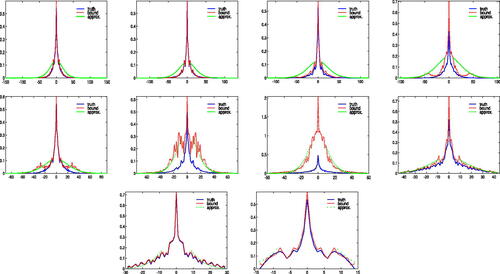
Fig. 7. The averaged error covariance along diagonals of two representative blocks. See the caption of for details.
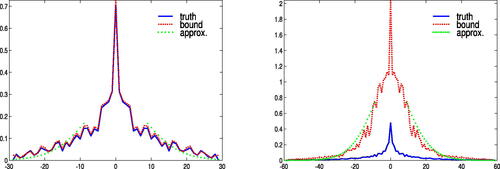
Fig. 9. The averaged error covariance along diagonals of blocks for localisation c = 30. The horizontal axis represents the indices of diagonals, where the middle point is the main diagonal. The vertical axis represents the average value of the elements of error covariance along diagonals. The blue curve represents the error covariance of an EnKF. The red curve is the matrix upper bound of error covariance. The green curve represents the approximated decay function.
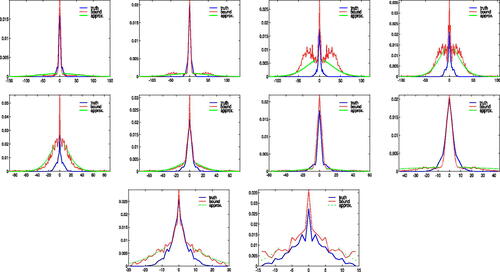
Fig. 11. The averaged error covariance along diagonals of blocks for localisation c = 7. See the caption of for details.
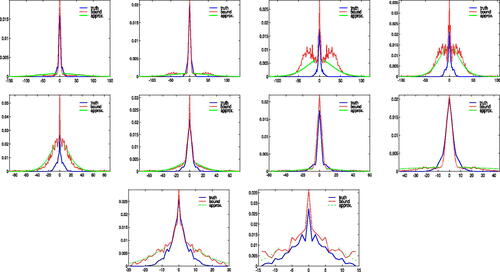
Table 1. The parameters in Example 3.


